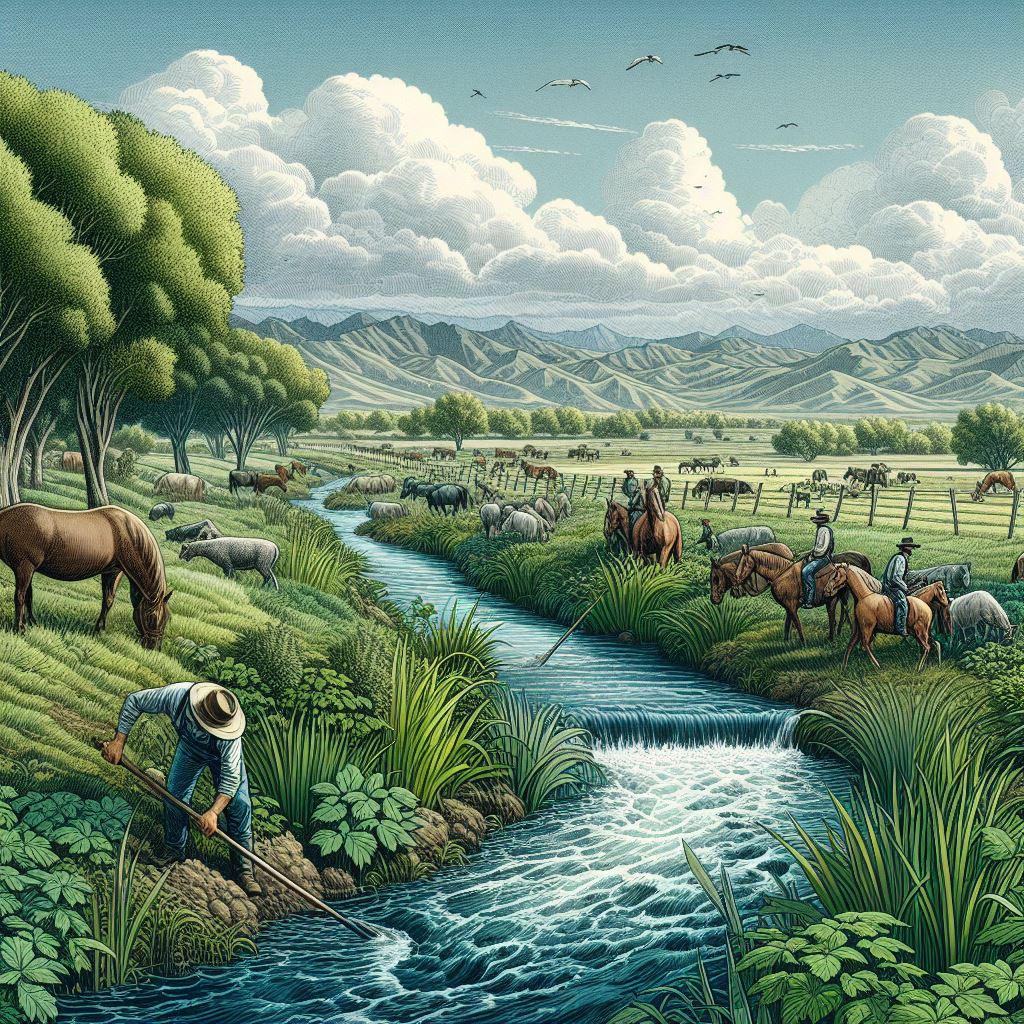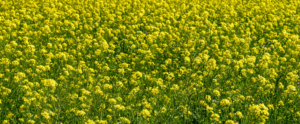
Riparian Buffers 3.jpg
Riparian Buffers
Definition:
Riparian buffers are vegetated areas consisting of trees, shrubs, grasses, and other vegetation established along the banks of rivers, streams, lakes, and wetlands. These buffer zones serve as natural protective barriers that help filter pollutants, stabilize stream banks, regulate water temperature, and provide habitat for wildlife. Riparian buffers play a crucial role in enhancing water quality, supporting biodiversity, and protecting aquatic ecosystems in agricultural landscapes.
Practical Advice:
- Assessing Riparian Needs: Conduct a riparian assessment to identify areas in need of buffer establishment or enhancement. Evaluate streambank erosion, water quality, habitat condition, and land use practices to prioritize riparian buffer implementation in areas with the greatest ecological significance and degradation risk.
- Designing Buffer Width: Design riparian buffers with appropriate width and vegetation density to achieve desired ecological and water quality objectives. Consider factors such as stream width, slope, floodplain width, and land use intensity when determining buffer width to maximize pollutant removal, bank stabilization, and habitat provision.
Valuable Assistance:
- Selecting Vegetation Species: Choose native plant species suitable for riparian buffer establishment based on local climate, soil conditions, and hydrological characteristics. Select a diverse mix of trees, shrubs, grasses, and forbs that provide erosion control, wildlife habitat, and water filtration benefits, enhancing buffer resilience and functionality.
- Implementing Buffer Establishment: Implement proper planting and establishment techniques to ensure the success of riparian buffer projects. Prepare the site through weed control and soil preparation, plant vegetation using appropriate spacing and planting methods, and provide post-planting care such as irrigation, mulching, and weed management to promote plant survival and growth.
Enlightening Details:
- Enhancing Water Quality: Riparian buffers improve water quality by filtering pollutants and sediment from surface runoff before they enter water bodies. Vegetation in riparian buffers absorbs nutrients, pesticides, and sediment, reducing pollutant loads and improving water clarity, oxygen levels, and overall aquatic habitat quality downstream.
- Protecting Streambanks: Riparian buffers stabilize streambanks and reduce erosion by anchoring soil with deep-rooted vegetation. Plant roots bind soil particles, absorb excess moisture, and protect banks from the erosive forces of flowing water, preventing streambank collapse, sedimentation, and habitat degradation.
Actionable Suggestions:
- Engaging in Restoration Efforts: Participate in riparian restoration initiatives and collaborative projects with local conservation organizations, watershed groups, and government agencies. Contribute to riparian buffer establishment, enhancement, and maintenance efforts to improve water quality, enhance habitat, and protect natural resources within the watershed.
- Educating Landowners: Provide education and outreach to landowners and stakeholders on the benefits of riparian buffers and the importance of riparian zone management. Offer resources, technical assistance, and incentives to encourage voluntary adoption of riparian buffer practices and promote stewardship of riparian areas.
Conclusion:
Riparian buffers are essential components of watershed management that provide multiple ecological, economic, and social benefits. By establishing and maintaining riparian buffers along watercourses, farmers can improve water quality, reduce erosion, enhance wildlife habitat, and contribute to the overall health and resilience of aquatic ecosystems and landscapes.
Fall off the barn roof and busted your keister? Life on the farm or ranch can be tough on the bum. Need a break? Laugh it off at FarmerCowboy.com, the #1 farm humor site. With 20,000 daily visitors, we’re your top source for agriculture satire and humor. Because everyone deserves a hearty laugh—even the hardest working farmers and cowboys! Join us and turn those long days into fun tales at FarmerCowboy.com.


Originally posted 2012-02-29 12:46:32.
Originally posted 2024-06-23 17:41:18.
Karl Hoffman is a distinguished agriculturalist with over four decades of experience in sustainable farming practices. He holds a Ph.D. in Agronomy from Cornell University and has made significant contributions as a professor at Iowa State University. Hoffman’s groundbreaking research on integrated pest management and soil health has revolutionized modern agriculture. As a respected farm journalist, his column “Field Notes with Karl Hoffman” and his blog “The Modern Farmer” provide insightful, practical advice to a global audience. Hoffman’s work with the USDA and the United Nations FAO has enhanced food security worldwide. His awards include the USDA’s Distinguished Service Award and the World Food Prize, reflecting his profound impact on agriculture and sustainability.




